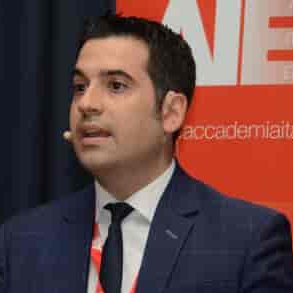Biocompatibility and Bioactivity of New Endodontic Materials
A special issue of Materials (ISSN 1996-1944). This special issue belongs to the section "Biomaterials".
Deadline for manuscript submissions: closed (30 December 2020) | Viewed by 26008
Special Issue Editor
Interests: oral health; special care in dentistry; gerodontology; oral health and diseases
Special Issues, Collections and Topics in MDPI journals
Special Issue Information
Dear Colleagues,
In dentistry, research on biocompatibility of new materials prior to their clinical application is much needed, as the compounds may potentially damage the surrounding tissues, stimulating adverse reactions including toxicity, allergy or carcinogenicity, ultimately affecting the tissue renewal process and leading to the development and/or maintenance of exacerbated inflammatory responses. Substantial developments in materials science have led to the formulation of novel, bioactive materials for use in endodontics. Calcium silicate-based materials have been widely studied due to their resemblance and similar applicability to mineral trioxide aggregate (MTA). As bioactive materials are assumed to directly interact with pulp and/or periapical cells, or through the diffusion of components within the living periradicular tissue, assessing their biocompatibility is critical to ascertain their potential influence on reparative/regenerative responses.
This Special Issue will focus on the biocompatibility and bioactivity of new endodontic materials and their impact on clinical practice. Full papers of original articles, communications, and review articles are all welcome.
Prof. Dr. Francisco Javier Rodríguez Lozano
Guest Editor
Manuscript Submission Information
Manuscripts should be submitted online at www.mdpi.com by registering and logging in to this website. Once you are registered, click here to go to the submission form. Manuscripts can be submitted until the deadline. All submissions that pass pre-check are peer-reviewed. Accepted papers will be published continuously in the journal (as soon as accepted) and will be listed together on the special issue website. Research articles, review articles as well as short communications are invited. For planned papers, a title and short abstract (about 100 words) can be sent to the Editorial Office for announcement on this website.
Submitted manuscripts should not have been published previously, nor be under consideration for publication elsewhere (except conference proceedings papers). All manuscripts are thoroughly refereed through a single-blind peer-review process. A guide for authors and other relevant information for submission of manuscripts is available on the Instructions for Authors page. Materials is an international peer-reviewed open access semimonthly journal published by MDPI.
Please visit the Instructions for Authors page before submitting a manuscript. The Article Processing Charge (APC) for publication in this open access journal is 2600 CHF (Swiss Francs). Submitted papers should be well formatted and use good English. Authors may use MDPI's English editing service prior to publication or during author revisions.
Keywords
- Biocompatibility
- Cytotoxicity
- Endodontics
- Regenerative endodontics
- Hydraulic cements
- Calcium silicate-based materials
- Bioactivity
- Dental stem cells and endodontics
- Mineral trioxide aggregate
- Stem cells
- Endodontic materials






